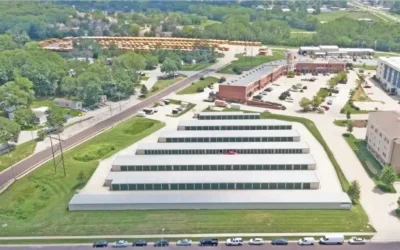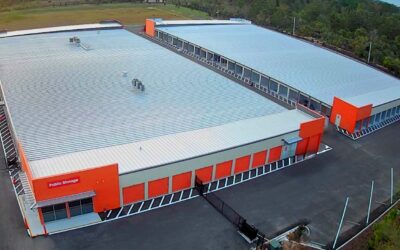Public Storage continues to grapple with decelerating same-store revenue growth as it faces slower rental growth and declining occupancy rates brought on by record-levels of new self-storage development.
The company saw same-store revenue grow 2.4 percent during the third quarter of 2017, a slowdown from 5.1 percent same-store revenue growth the same quarter last year. The quarter marks the tenth consecutive quarter of decelerated same-store revenue growth, according to an analysis by FBR Capital Markets.
“All of our top 20 markets…the rate of revenue growth, was down year-over-year. So we’re not seen any markets with accelerating rates of revenue growth,” said CEO Ron Havner, during the company’s most recent earnings conference call.
Rates take a hit
The company’s ability to push rates higher was diminished in the third quarter, compared with the year before. The company was able to increase realized rent per occupied square foot 5.2 percent during the third quarter of 2016. This year it only increased realized rent 3.4 percent year-over-year.
John Reyes, chief financial officer, said during the company’s conference call “demand still remains very soft throughout the country for us.”
That doesn’t look to change any time in the near future.
“I don’t really see as we move forward into the fourth quarter that we’re going to see a lot of traction on pushing street rates, at least over the next three to four months probably,” Reyes said.
Occupancy declines
As of September 30, the overall same-store occupancy rate stood at 93.2 percent. a 1.1 percent drop from 94.2 percent the year before.
Havner said waves of new supply in certain markets are primarily to blame as markets that have seen extensive development are seeing the steepest declines in occupancy
“If you look at the markets that had meaningful degradation in occupancy Q3 2017 versus Q3 2016…Miami is down 1.8 percent, Portland is down 1.6 percent, Chicago is down 1.6 percent, Dallas is down 1.6 percent, Atlanta is down 1.5 percent, Denver is down 1.3 percent,” Havner said.
Havner said the company has tracked 30 properties under development in Portland, and 30 to 40 properties under development in Denver.
“I’m hoping given the slow down in occupancy and rental rates, and reduction in pricing power, that will create some kind of headwind for people to put developments on hold or simply abandon doing them,” said Havner.







